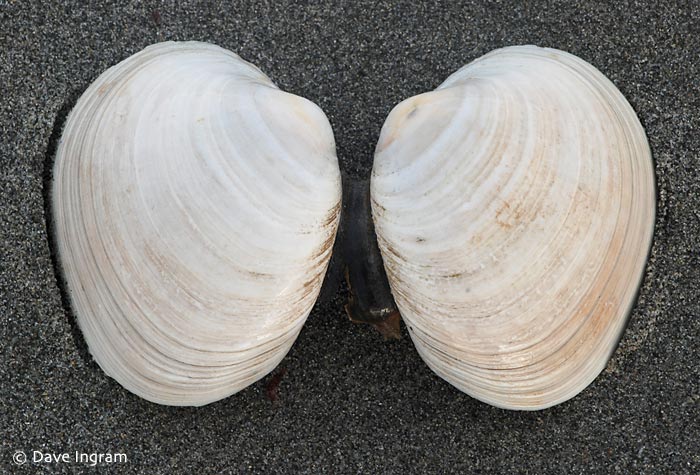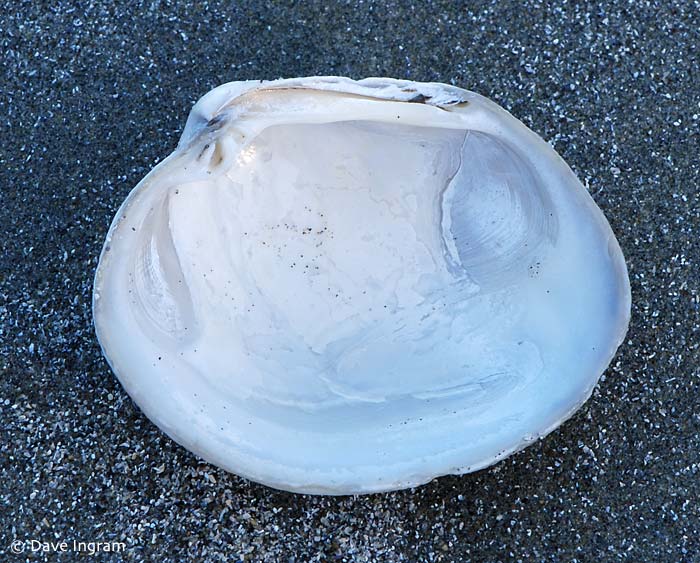Goose Spit in Comox, British Columbia is a good place to look for things washed up in the tide. The long, sandy beaches often deliver intertidal treasures. Seaweed in the strand line is intriguing to examine. Beachwalkers can look for the shells of dead clams exposed by the dropping tide. One of the clams that we discovered on Tuesday at Goose Spit was the Butter Clam (Saxidomus gigantea).
Clams belong in the Phylum Mollusca, Class Bivalvia and have two shells or valves. They are filter feeders and take microscopic organisms out of the water that they draw into their bodies through a siphon.
Butter clams are large, heavy shelled clams that are buried up to 30cm deep. They are common in the lower part of the intertidal zone to depths of 40m. Butter Clams can be up to 15cm across and make excellent clam chowder. Always check for shellfish closures before harvesting the clams and remove the black tips of the siphons while preparing the meat as PSP toxin can accumulate there.
One of the diagnostic features that helps to identify a Butter Clam is a series of “teeth” at the hinge. These fit together when the shell is together.
Discovering these shells on such a cool day made me think of only one thing – heading back to the house and putting on a big pot of clam chowder. Now I’ve just got to find a good recipe and some live clams.


